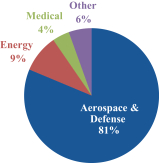under the terms of our existing or future debt instruments. See “Risk Factors — Risks Relating to the Notes — We may not be able to repurchase the notes upon a change of control repurchase event.”
For purposes of the foregoing discussion of a repurchase at the option of holders, the following definitions are applicable:
“Change of Control” means the occurrence of any one of the following:
(1) the direct or indirect sale, lease, transfer, conveyance or other disposition (other than by way of merger or consolidation), in one or a series of related transactions, of all or substantially all of the assets of the Company and its Subsidiaries taken as a whole to any Person (including any “person” (as that term is used in Section 13(d)(3) of the Exchange Act)) other than to the Company or one of its Subsidiaries;
(2) the consummation of any transaction (including, without limitation, any merger or consolidation) the result of which is that any Person (including any “person” (as that term is used in Section 13(d)(3) of the Exchange Act)) becomes the “beneficial owner” (as defined in Rules 13d-3 and 13d-5 under the Exchange Act), directly or indirectly, of more than 50% of the outstanding Voting Stock of the Company, measured by voting power rather than number of shares;
(3) the Company consolidates with, or merges with or into, any Person, or any Person consolidates with, or merges with or into, the Company, in any such event pursuant to a transaction in which any of the outstanding Voting Stock of the Company or such other Person is converted into or exchanged for cash, securities or other property, other than any such transaction where the shares of the Voting Stock of the Company outstanding immediately prior to such transaction constitute, or are converted into or exchanged for, a majority of the Voting Stock of the surviving Person immediately after giving effect to such transaction; or
(4) the adoption of a plan relating to the liquidation or dissolution of the Company.
“Change of Control Repurchase Event” means the occurrence of both a Change of Control and a Ratings Event.
“Investment Grade” means a rating of Baa3 or better by Moody’s (or its equivalent under any successor Rating Categories of Moody’s), a rating of BBB- or better by S&P (or its equivalent under any successor Rating Categories of S&P) and the equivalent Investment Grade credit rating from any additional Rating Agency or Rating Agencies selected by the Company.
“Moody’s” means Moody’s Investors Service, Inc., and its successors.
“Person” means any individual, corporation, partnership, joint venture, association, joint-stock company, trust, unincorporated organization, limited liability company or government or other entity.
“Rating Agency” means (1) each of Moody’s and S&P and (2) if either of Moody��s or S&P ceases to rate the notes of a series or fails to make a rating of the notes of a series publicly available for reasons outside of the control of the Company, a Substitute Rating Agency thereof.
“Rating Category” means (i) with respect to S&P, any of the following categories: BBB, BB, B, CCC, CC, C and D (or equivalent successor categories); (ii) with respect to Moody’s, any of the following categories: Baa, Ba, B, Caa, Ca, C and D (or equivalent successor categories); and (iii) the equivalent of any such category of S&P or Moody’s used by another Rating Agency. In determining whether the rating of any notes has decreased by one or more gradations, gradations within Rating Categories (+ and — for S&P; 1, 2 and 3 for Moody’s; or the equivalent gradations for another Rating Agency) shall be taken into account (e.g., with respect to S&P, a decline in a rating from BB+ to BB, as well as from BB- to B+, will constitute a decrease of one gradation).
S-31








